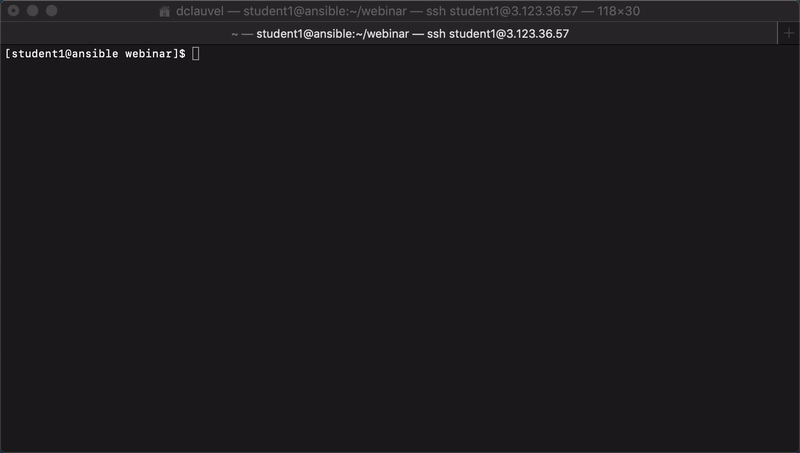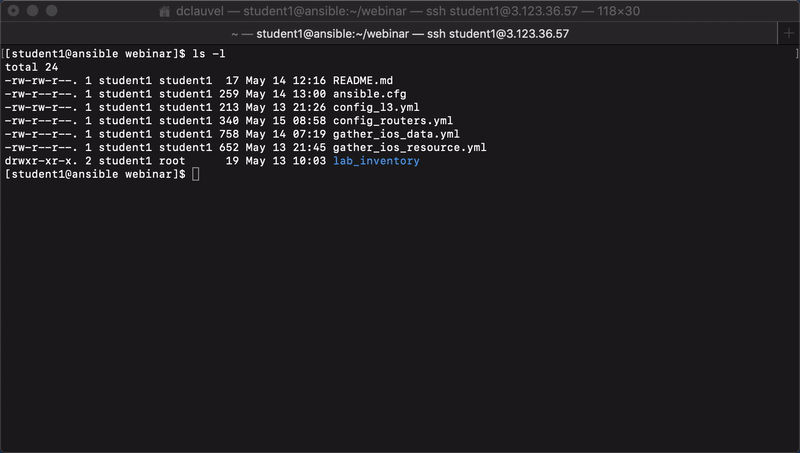In Ansible.
Translations: fr
Here's a small write up on the demo I did for our "Beyond Linux, Automate all the things" webinar.
The code I used is at:
https://github.com/automaticdavid/webinar_052020
The security workshop can be accessed at:
https://ansible.github.io/workshops/
The webinar replay (in french) is at:
L’automatisation au delà des systèmes Linux
1- Using facts & ios_command

In this first part I showed the inventory used and how we can use inventory groups. In the gather_ios_data.yml playbook, note that I'm using gather_facts: yes for network devices which is new with Ansible 2.9. This allows me to use the ansible_net_* variables directly in my play!
I then show how to use ios_command to run commands and register the output. I use this to diplay snmp settings on my 4 routers.
The config_routers.yml playbook allows me to change those snmp settings. Note that when I run it 2 times, the second time does nothing: changed=0 is displayed and all the nodes are green OK. That's indempotency: Ansible doesn't do anything if we're already in the state we want.
I then log on to the device rtr1 and make a manual change. When I run the playbook again, Ansible corrects that one thing only.
2- Ressource modules & Source of truth.

To take this a bit further, I then use the ios_facts modules, and with Ansible 2.9 this comes with a powerfull feature: Ansible is able to extract information from my already configured devices and produce structured data. This is shown when I execute gather_ios_resource.yml and display the L3 interfaces configuration as a YAML list of interfaces:

Each list element (starting with a dash) is a dictionnary that contains keys: in the example "ipv4" and "name". The "ipv4" key contains a list, here with only one element. This element is also a dictionary, with only one key: "address".
This makes it very easy to read and modify configuration values.
As a matter of fact the playbook also writes these values in a host_vars directory. In the demo I then make a change in these values and run the config_l3.yml playbook in check mode first: this tells us what Ansible would change but doesn't actually change anything. Then I apply the change by running in normal mode. When I run the gather_ios_resource.yml again, I can see that the change was made on rtr1. The local source of truth is not updated: it's already up to date.
What we see here is that Ansible is able to produce structured configuration data (with the ios_facts module) and then consume this data to apply configuration changes (with the ios_l3_interfaces module). Since the configuration is in YAML, it can be managed as code in git, with the inventory itself. This means that you have full tracability of changes, you can re-apply any version of your infrastrcture or manage it with a gitflow.
As always with Ansible, it starts with some very simple concepts but delivers powerfull ways of doing things.
Find out more about ressource modules in this Ansible Automates talk by @IPvSean:
https://www.ansible.com/2019-ansible-network-automation-resource-modules